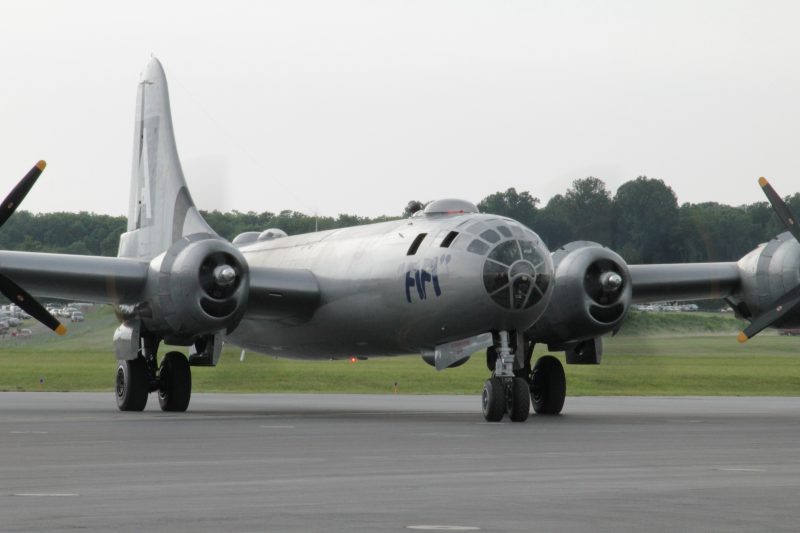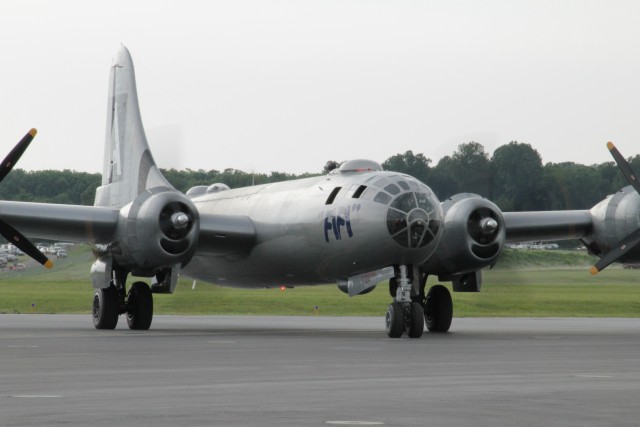A squadron of World War Two airplanes have arrived in Tucson to join the Commemorative Air Force, a volunteer group which restores and flies World War Two aircraft.
A B-29 Superfortress is the centre of attention, along with a B-25 Mitchell, C-47 Skytrain and a Pt-17 Stearman biplane.
The B-29 Superfortress is known as Fifi, while the B-25 Mitchell is known as Maid in the Shade, with a young woman lying on a beach painted on her side.
Most of the aircraft the group finds are in tatters and mere shells of their former war time glory. The B-25 took almost 20 years to restore fully, and would have been headed to the scrap heap if it hadn’t been for the Commemorative Air Force.
Inside the bay doors where bombs were stored are the names of all the pilots and crew who had flown the B-25 during World War Two. The group found out that the bomber had been used on various death-defying missions including a bombing run over targeting Italy’s rail bridges.
The B-29 was one of the most advanced and largest aircraft used by the US Air Force during World War Two and the Korean War. Designed by Boeing, the Superfortress has four-engines and is propeller-driven. It has a pressurized cabin, electronic systems for fire-control, and four machine gun turrets that can be remote-controlled.
The US made B-25 Mitchell was a twin-engined medium sized bomber. It was used widely by the Allies during World War Two and afterwards, as it served for almost forty years.
The C-47 Skytrain is a sand-coloured aircraft due to the fact that she was used for cargo and transport in North Africa. Later in the war she was used to get supplies and equipment to Eastern Europe. To help fund her restoration and ongoing flying costs, inside she has been converted into a corporate jet with sofas and even a sound system. The Douglas C-47 Skytrain or Dakota was developed from the commercial Douglas DC-3 and still remains in use for front line operations today.
Boeing’s Pt-17 Stearman biplane was developed and built during the 1930s and 1940s and was mainly used as a military training aircraft After the war, many were sold off privately to civilians and became used in farming as crop dusters, for sports and for aerobatic displays at airshows, the Tucson Sentinel reports.
The Commemorative Air Force has transported all of its aircraft to Tucson International Airport in Arizona, so that the general public can view them and take tours of the vintage aircraft. The tours will also help to support the continual fundraising required to keep the planes airborne.
Image used: Wikipedia

